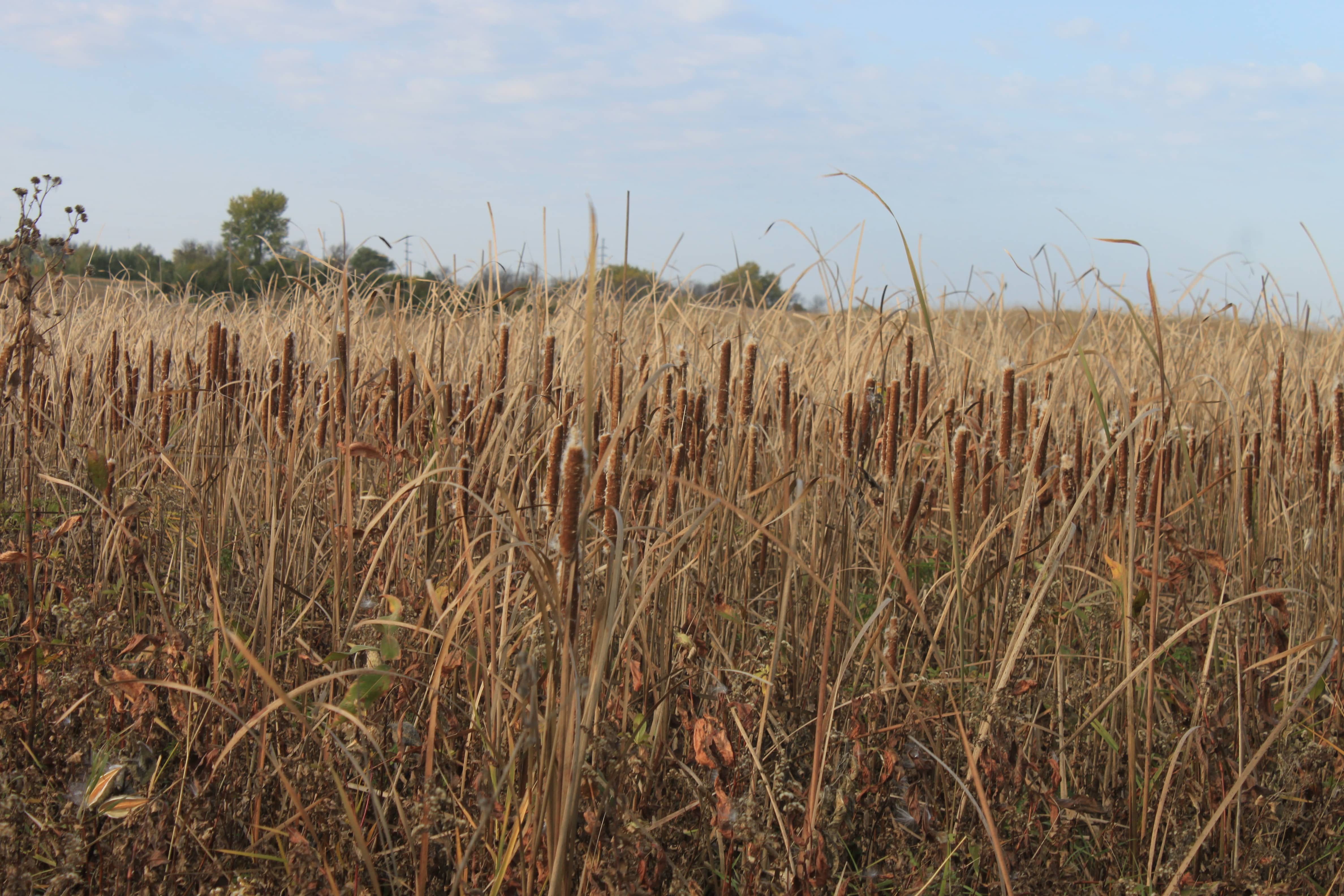
Deep Cover. Cattail sloughs provide challenging walks and havens for pheasants and other wildlife. Simonson Photo.
By Nick Simonson
In the dry, crackling brown of a cattail slough is one of my favorite places to be in the fall. When the stand of dense vegetation is about chest high – tall enough to provide a good screen and cover for pheasants, but short enough to allow for a clear shot when they flush – that’s about as perfect as things can get. Maybe I’m a glutton for punishment but plowing through that kind cover to me is enjoyable, especially after a couple of months back on the workout train ahead of hunting season, where my thighs and hips are built up and flexible enough for the lift-drive-and-step motion needed to power through the tangles of reeds above and the wads of roots and stems below.
On North Dakota’s pheasant opener this weekend, I was more than happy to join my dog in the thick stuff once again, watching the stutter-step of his advance ahead of me in the cattails; their tops and the roof-like construction the bent reeds rattling with each of his charges after some unseen scent line along the dry bottom of the late-season wetlands. Sure, even with things dry and relatively warm, it wasn’t likely that a whole lot of birds would be stationed in the deep cover as the day dawned, but it never hurts to check, and without my usual Saturday morning run on the busy day of hunting, the effort easily replaced a few miles on the blacktop, and was an upgrade from an hour on the treadmill. Besides, there were plenty of other able guns in our group to take the shot when one or two birds would slide out ahead of us or off to the side.
Perhaps the best part of the experience to walk the cattails to kick off yet another hunting season was simply the fact that I was able to walk them, and not just due to the advancing throes of my middle age. In an era where, bit-by-bit, pockets of marginal acres are being drained, dried, tilled and turned over, each stand of swamp grass and cattails that are still on the land is a valuable remnant of habitat, worthy of celebration and protection. In these potholes, some less than a few hundred square feet in size, is where pheasants find cover now, and especially later in the season when the cold of winter comes roaring in and snow builds up on the adjacent fields. In the grass around these sloughs each spring and summer, pheasants rear their young along with the next generation of mallards, whitetail deer and songbirds. Add some water in the middle of a donut-ring of cattails, even if it’s half gone by fall, and the biodiversity of huntable species, insects, amphibians and mammals jumps exponentially and the spot becomes a magnet for migrating ducks until freeze-up.
As the season wears on, these areas of habitat withstand blizzards and below-zero temperatures, and the three-toed tracks winding through the bases of the cattails along little trails twisting and turning from one end of the slough to the other provide both sight and scent for success. After the firearms deer season concludes, that’s when the real deep cover hunting begins, and cattails become synonymous with exciting flushes that send an explosion of white snow and shards of brown leaves into the air. Weaving in and out from the edge until a scent line is exposed to my dog’s nose, or that superhighway of tracks suggests fresh movement by resident birds into the deep cover, I’ll be ready to lead the charge (following Ole’s effort, of course) into the thick stuff.
Whether dressed lightly now for the warmer days of autumn or bundled up against the bluster of early winter at the end of pheasant season, the crackling brown stadium into which I march is a fair enough playing field for an opportunity to pursue my favorite pastime. I’ll continue to take on that challenge as long as my dog is willing to join me, and others shun the sweat equity required of one of the sweetest spots for roosters…in our outdoors.
